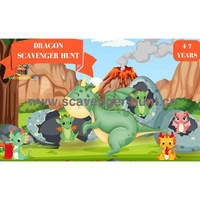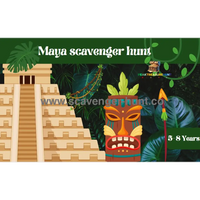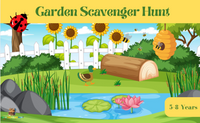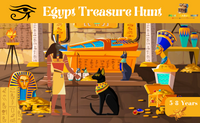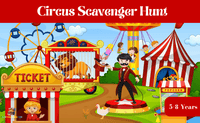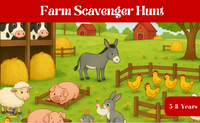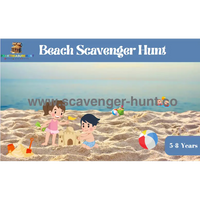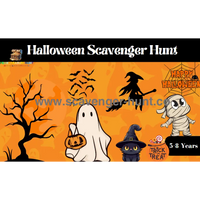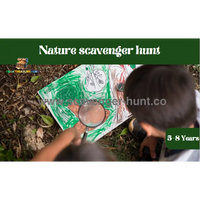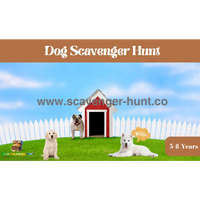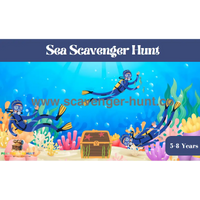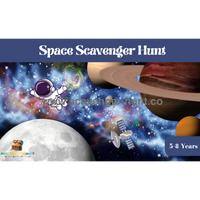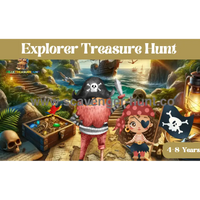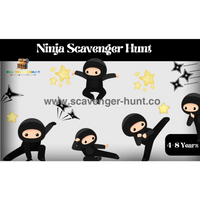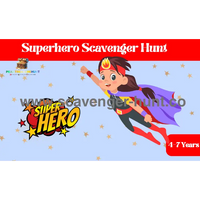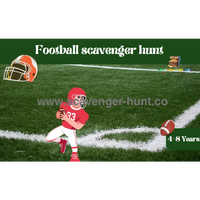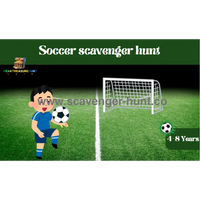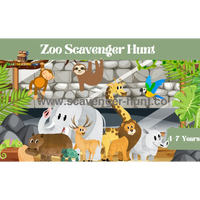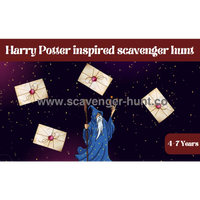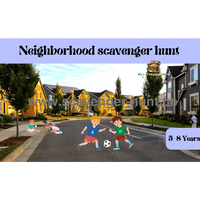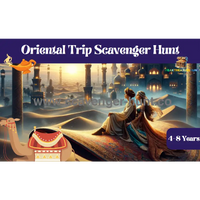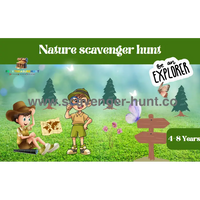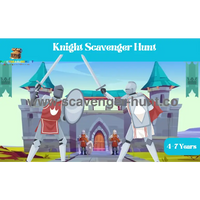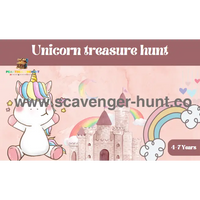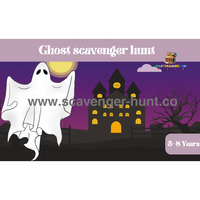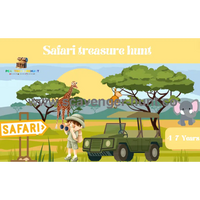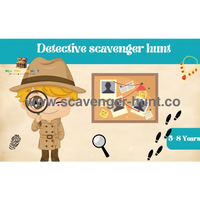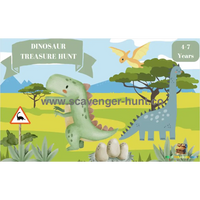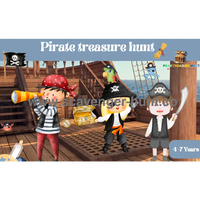Whether you're organizing a treasure hunt for children, planning a hiking adventure, designing a walking tour, or simply trying to create clear directions for guests visiting your home, effective route planning doesn't have to be complicated. The key to successful navigation lies in understanding a few fundamental principles and applying them consistently. With the right approach, anyone can create clear, easy-to-follow routes that eliminate confusion and make every journey enjoyable.
Route planning is both an art and a science. It requires logical thinking to ensure efficiency and safety, but also creativity to make the journey engaging and memorable. The best routes balance practical considerations like distance and difficulty with experiential factors like interesting landmarks and scenic beauty. Whether you're working with a simple backyard treasure hunt or a complex multi-day hiking expedition, the same core principles apply.
Understanding the Basics of Route Design
Every successful route begins with clear objectives and thorough preparation. Before drawing a single line on a map or placing the first directional sign, you need to understand what you're trying to achieve and who will be following your route.
Define Your Purpose and Audience
The first step in route planning is identifying your specific goals. Are you creating an educational nature walk that teaches children about local plants and wildlife? Planning an efficient delivery route for a business? Designing a scenic tour that showcases the best features of your area? Your purpose will influence every decision you make about the route's structure, complexity, and timing.
Understanding your audience is equally important. Routes for young children require different considerations than those designed for experienced hikers. Family groups need different accommodations than solo adventurers. Consider the physical capabilities, attention spans, available time, and specific interests of the people who will use your route.
Start with the Destination
Effective route planning often works backwards from the final destination. Where do you want people to end up, and what condition do you want them to be in when they arrive? If you're planning a treasure hunt, the final location should be exciting and rewarding. For a nature walk, you might want to end at a scenic overlook or interesting natural feature. Understanding your endpoint helps you make informed decisions about the path that leads there.
Consider Safety and Accessibility
Safety should always be your top priority when planning any route. This means considering potential hazards like busy roads, unstable terrain, or areas with limited visibility. It also means ensuring that your route is appropriate for your intended audience's abilities and experience levels. Accessibility considerations might include wheelchair access, rest areas for elderly participants, or alternative routes for people with different mobility needs.
Creating Clear and Logical Pathways
The best routes feel intuitive and natural to follow. They guide people smoothly from one point to the next without confusion or unnecessary backtracking. Achieving this flow requires careful attention to the logical sequence of your route and the clarity of your directional guidance.
The Power of Natural Flow
Humans naturally prefer routes that feel logical and flow smoothly from one point to the next. This often means following existing pathways, natural contours, or established traffic patterns rather than fighting against them. When possible, design routes that work with the natural movement patterns of your environment rather than against them.
For outdoor routes, this might mean following ridge lines, stream beds, or existing trails. In urban environments, it could involve using sidewalks, established pedestrian crossings, and familiar landmarks. The goal is to create a path that feels so natural that followers almost don't need directions to stay on track.
Minimizing Decision Points
Every time followers of your route encounter a choice about which direction to go, there's an opportunity for confusion and mistakes. The most effective routes minimize these decision points by providing clear, unambiguous guidance at every junction. When choices are unavoidable, make the correct option as obvious as possible through strategic placement of landmarks, signs, or other navigational aids.
Building in Confirmation Points
Even the clearest routes benefit from regular confirmation that followers are still on the right track. These confirmation points might be distinctive landmarks, strategically placed signs, or natural features that serve as progress markers. They reassure followers that they're making good progress and help them catch navigation errors before they become serious problems.
Landmark Selection and Utilization
Landmarks are the backbone of effective route planning. They serve as navigation aids, progress markers, and points of interest that make the journey engaging and memorable. Choosing the right landmarks and using them effectively can transform a simple route into an adventure.
Choosing Distinctive Features
The best landmarks are easily recognizable, memorable, and unlikely to change over time. Natural features like distinctive trees, rock formations, or water features often make excellent landmarks because they're permanent and visually striking. Man-made features like buildings, monuments, or distinctive signs can also work well, though they may be more subject to change over time.
Avoid landmarks that might be confusing or that could easily be mistaken for similar features elsewhere along the route. A "big oak tree" might not be helpful if there are several large oak trees in the area, but "the oak tree with the tire swing" provides much clearer identification.
Creating Visual Interest
The most engaging routes incorporate landmarks that are interesting in their own right, not just functional navigation aids. This might include scenic viewpoints, historical sites, unusual natural features, or locations with interesting stories attached. These points of interest transform a simple journey from point A to point B into an exploration and discovery experience.
Spacing for Optimal Navigation
Landmarks should be spaced frequently enough to provide regular confirmation and guidance, but not so frequently that they become overwhelming or confusing. The appropriate spacing depends on your audience and environment, but generally, followers should never go more than a few minutes without encountering some form of navigational confirmation.
Distance and Timing Considerations
Understanding how distance and time interact with your audience's capabilities and expectations is crucial for creating routes that are both achievable and enjoyable. Poor timing can turn an otherwise excellent route into a frustrating or exhausting experience.
Realistic Time Estimates
Always err on the side of generosity when estimating how long your route will take to complete. People move at different speeds, and groups tend to move more slowly than individuals. Factor in time for stops, observations, rest breaks, and the inevitable slower members of any group. It's much better to have people finish early feeling accomplished than to have them running late and feeling stressed.
Consider the different factors that affect travel speed: terrain difficulty, weather conditions, group size and composition, the number and length of stops, and the complexity of navigation required. A route that takes an experienced individual 30 minutes might easily take a family group with young children an hour or more.
Building in Flexibility
The best routes include natural points where the experience can be shortened or extended based on time constraints or group energy levels. These might be loop options that allow early return, optional side trips for those who want more adventure, or clear stopping points where groups can pause and assess their situation.
Managing Energy Levels
Consider how your route will affect participants' energy throughout the journey. Front-loading the most difficult or demanding sections often works well because people start with maximum energy and enthusiasm. However, some routes benefit from a gradual warm-up followed by more challenging middle sections and an easier finish.
Safety and Risk Management
Creating safe routes requires thinking through potential hazards and building in appropriate safeguards. This doesn't mean eliminating all risk or challenge, but rather ensuring that risks are appropriate, well-managed, and clearly communicated to participants.
Hazard Assessment and Mitigation
Walk your intended route multiple times under different conditions to identify potential safety concerns. Consider weather-related hazards like slippery surfaces when wet, areas that might flood, or sections that become dangerous in high winds. Look for traffic-related risks, unstable terrain, poisonous plants, or areas where people might become lost or separated from their group.
For each identified hazard, develop appropriate mitigation strategies. This might involve route modifications to avoid the hazard entirely, clear warnings about potential risks, specific safety instructions, or requirements for safety equipment.
Emergency Planning
Every route should include consideration of what would happen if something goes wrong. Identify points along the route where emergency services could access participants if needed. Ensure that key organizers or guides have communication devices and know how to contact emergency services. Consider evacuation routes and rally points where groups could gather in case of problems.
Clear Communication of Expectations
Participants should understand the route's difficulty level, expected duration, safety requirements, and what to bring before they begin. This allows people to make informed decisions about their participation and come appropriately prepared. Clear communication prevents many problems before they occur.
Technology Integration and Modern Tools
While traditional navigation skills remain important, modern technology offers powerful tools that can enhance route planning and execution. The key is using technology to supplement rather than replace fundamental navigation principles.
Digital Mapping and GPS Integration
Modern mapping applications allow precise route planning with detailed elevation profiles, distance measurements, and satellite imagery. These tools can help you identify potential problems, optimize route efficiency, and create detailed documentation for future use. GPS coordinates can provide precise location information for key landmarks and decision points.
However, always remember that technology can fail. Battery life, signal availability, and device reliability should never be the only factors standing between participants and successful navigation. Traditional backup methods remain essential.
QR Codes and Digital Clues
For treasure hunts and educational routes, QR codes can provide an engaging way to deliver information, clues, or additional content at specific locations. Participants can scan codes with their smartphones to access videos, audio recordings, detailed information, or interactive puzzles that enhance the experience.
Photo Documentation
Digital photography makes it easy to document landmarks, create visual route guides, and share information about your routes with others. Photos can serve as navigation aids, progress documentation, or simply help preserve memories of the experience.
Age-Appropriate Route Design
Different age groups have dramatically different capabilities, interests, and attention spans. Successful route planning acknowledges these differences and designs experiences that match participants' developmental stages and abilities.
Routes for Young Children (Ages 3-7)
Young children have limited attention spans and physical endurance, but boundless curiosity and enthusiasm for discovery. Routes for this age group should be short, with frequent points of interest and opportunities for hands-on exploration. Safety considerations are paramount, with routes avoiding traffic, dangerous terrain, or areas where children might easily become separated from supervisors.
Focus on sensory experiences, simple discoveries, and immediate rewards. Young children respond well to themes, stories, and imaginative elements that transform a simple walk into an adventure. Keep distances short – often no more than 15-20 minutes of actual walking time with plenty of stops for exploration and rest.
Routes for Elementary Age Children (Ages 8-12)
This age group can handle more complex navigation, longer distances, and educational content. They enjoy challenges and problem-solving opportunities, making them ideal candidates for treasure hunts, scavenger hunts, and routes that incorporate puzzles or learning activities.
Elementary age children can begin to understand map reading, compass use, and basic navigation principles. They can handle routes up to an hour or two in duration and enjoy taking on responsibilities like being group navigators or landmark spotters.
Routes for Teenagers and Adults
Older participants can handle complex navigation, challenging terrain, and longer distances. They often appreciate routes that offer physical challenges, scenic beauty, historical significance, or unique experiences. Technology integration tends to be more successful with this age group, as they're comfortable with digital tools and applications.
Routes for teens and adults can incorporate educational elements, skill-building opportunities, and personal challenge components. They can handle multi-day adventures, complex route-finding, and responsibility for their own safety and navigation.
Common Mistakes and How to Avoid Them
Learning from common route planning mistakes can save time, prevent frustration, and ensure better experiences for everyone involved. Most routing problems stem from inadequate preparation, unrealistic expectations, or failure to consider the participant perspective.
Overestimating Participant Abilities
One of the most common mistakes is creating routes that are too difficult, too long, or too complex for the intended audience. This often happens when experienced route planners forget what it's like to be a beginner or when they underestimate how group dynamics affect travel speed and endurance.
Always test your routes with representatives of your target audience before finalizing them. What seems simple and straightforward to you might be confusing or overwhelming to others. Build in more time and easier alternatives than you think you'll need.
Inadequate Landmark Description
Vague or ambiguous landmark descriptions cause more navigation problems than almost any other factor. "Turn left at the big tree" becomes meaningless when there are multiple large trees, or when seasonal changes affect their appearance. Always test your landmark descriptions with people who aren't familiar with the route.
Weather and Seasonal Considerations
Routes that work perfectly in good weather might become dangerous or impossible in rain, snow, or extreme heat. Seasonal changes can dramatically alter the appearance of landmarks, the difficulty of terrain, or the availability of resources along the route. Plan for variability and have contingency options available.
Ignoring Group Dynamics
Individual navigation and group navigation are fundamentally different experiences. Groups move more slowly, need more frequent breaks, and require different safety considerations. The strongest member of a group often isn't the limiting factor – plan for the needs of the least capable or experienced participants.
Creating Memorable Experiences
The best routes do more than simply get people from one place to another – they create lasting memories and positive experiences that participants want to repeat and share with others. This requires attention to the experiential aspects of route design, not just the practical navigation elements.
Storytelling and Narrative Elements
Routes that incorporate stories, themes, or narratives tend to be more engaging and memorable than purely functional paths. This might involve historical stories connected to landmarks along the way, fictional adventures that unfold as participants progress, or educational themes that tie different route elements together.
The story doesn't have to be complex or elaborate – even simple themes like "following the path of early settlers" or "discovering nature's secrets" can transform an ordinary walk into an engaging adventure.
Surprise and Discovery Elements
Build in unexpected discoveries, hidden features, or surprise elements that delight participants and create "wow" moments. These might be scenic viewpoints that suddenly open up, interesting wildlife viewing opportunities, or clever surprises placed strategically along the route.
The element of discovery taps into fundamental human curiosity and makes routes feel like adventures rather than simply following directions. Even adults enjoy the thrill of finding something unexpected or solving a clever puzzle.
Social and Collaborative Opportunities
Routes that encourage interaction, collaboration, and shared problem-solving tend to be more successful than those that treat participants as individual followers of directions. Build in opportunities for teamwork, discussion, and shared discovery.
This might involve challenges that require group cooperation, decision points where participants must work together to choose the best option, or simply scenic stops where groups naturally pause and interact with each other.
Documentation and Sharing
Creating excellent routes is only half the challenge – documenting and sharing them effectively ensures that others can benefit from your work and that you can replicate successful experiences in the future.
Creating Clear Route Guides
Document your routes with sufficient detail that others can follow them successfully without your personal guidance. This includes maps, landmark descriptions, timing estimates, difficulty ratings, safety considerations, and any special requirements or recommendations.
Good route documentation serves multiple purposes: it allows others to enjoy your routes, helps you remember details for future iterations, and provides valuable information for improving and refining your route design skills.
Photo and Video Documentation
Visual documentation helps others understand what to expect and serves as valuable planning tools for future route users. Photos of key landmarks, difficult navigation points, and scenic highlights help potential participants make informed decisions about whether a route suits their interests and abilities.
Sharing and Community Building
Consider sharing your best routes with relevant communities, whether through online platforms, local organizations, or informal networks. Many people appreciate access to well-designed routes, and sharing your work often leads to valuable feedback and suggestions for improvement.
Conclusion: The Art of Simple Navigation
Effective route planning combines logical thinking with creative problem-solving to create experiences that are both functional and memorable. The best routes feel effortless to follow, not because they're simple, but because they're thoughtfully designed to work with human nature rather than against it.
The principles of good route design – clear objectives, logical flow, distinctive landmarks, appropriate pacing, and safety consciousness – apply whether you're creating a 10-minute treasure hunt in your backyard or a multi-day wilderness adventure. The scale and complexity may vary, but the fundamental approach remains consistent.
Remember that route planning is a skill that improves with practice and experience. Don't expect perfection on your first attempts, and don't be afraid to modify and improve routes based on feedback and observation. The best route planners are those who pay attention to how people actually use their routes and continuously refine their approach based on real-world results.
Most importantly, remember that the goal of route planning is to facilitate positive experiences for the people who will follow your routes. Technical perfection means nothing if participants don't enjoy the journey or achieve their objectives. Keep the human element at the center of your planning process, and your routes will succeed in ways that purely technical approaches cannot match.
The investment of time and thought that goes into creating well-designed routes pays dividends in the form of safe, enjoyable, and memorable experiences for everyone involved. Whether you're organizing activities for your family, leading groups in your community, or simply trying to help friends navigate to your home more easily, these principles will help you create routes that people can follow with confidence and enjoy along the way.



